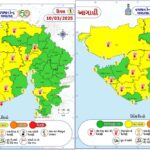In an unprecedented move, Australia has enacted a law barring individuals under 16 from accessing major social media platforms, citing mental health and safety as the primary motivations. While on the surface, this may appear to be a progressive step toward protecting vulnerable young minds, a closer analysis reveals a potential strategic layer: politics. This law, though packaged as a public safety measure, may well serve as a tactical tool to shape future voting patterns and solidify political dominance.
The Rationale: Protecting Young Minds
The official narrative behind the Online Safety Amendment (Social Media Minimum Age) Bill 2024 is clear—social media platforms expose young users to cyberbullying, mental health challenges, and harmful content. At ages 15 and 16, adolescents are particularly impressionable, prone to adopting ideologies, and easily influenced by information, whether accurate or manipulated.
There is no denying that social media can be a double-edged sword, with content ranging from educational to toxic. However, one cannot overlook how this influence also extends into the realm of politics. Social media is rife with political debates, campaigns, and ideologies, and opposition parties often use these platforms to amplify their voices.
The Political Underbelly: Prevention Over Cure
Here’s where the political dimension enters the picture. Adolescents aged 15 or 16 today are not just passive consumers; they are the voters of tomorrow. Social media, as a medium, plays a significant role in shaping their beliefs and ideologies. Opposition parties often capitalize on social platforms to critique the ruling government, disseminate their ideas, and engage with younger audiences.
For ruling parties, this presents a risk. Once these young individuals align themselves with opposition ideologies, they are less likely to reverse their stance as they age. In 2-3 years, when these adolescents reach voting age, they could tilt the scales against the incumbent government. This law, whether intentionally or not, functions as a preemptive strike—a way to shield impressionable youth from exposure to oppositional rhetoric before they can solidify their political beliefs.
The Strategic Implications
By restricting access to social media, the ruling government essentially limits the reach of political campaigns from opposition parties targeting younger demographics. While traditional media still exists, it does not have the same interactive, viral, and engaging quality that social media offers. This policy, therefore, can be seen as an effort to maintain political influence by curbing the formation of dissenting ideologies among future voters.
Moreover, the 12-month implementation period gives platforms time to comply, but it also ensures that by the next election cycle, a significant portion of the adolescent demographic remains under the radar of political campaigns on social media.
Counterarguments and Concerns
Critics argue that this law could drive youth to unregulated corners of the internet, where harmful ideologies and content flourish unchecked. Moreover, banning young people from social media does not address the root causes of mental health issues; instead, it simply displaces the problem.
From a political perspective, such restrictions could also backfire. Youth today are digitally savvy, and an outright ban might alienate them from the ruling government, labeling it as regressive or out of touch with modern realities.
Balancing Protection with Freedom
While the stated goal of this legislation is to protect children, its broader implications suggest a potential overlap with political strategy. The timing, the demographic focus, and the sweeping nature of the restrictions raise questions about whether this is truly about safety—or safeguarding political power.
The challenge lies in striking a balance between protecting young minds and fostering their ability to engage with the world, including its political dimensions. The debate surrounding this law will undoubtedly shape not only Australia’s digital landscape but also its political future. Whether this move will ensure long-term stability or spark a new wave of resistance among the youth remains to be seen.







